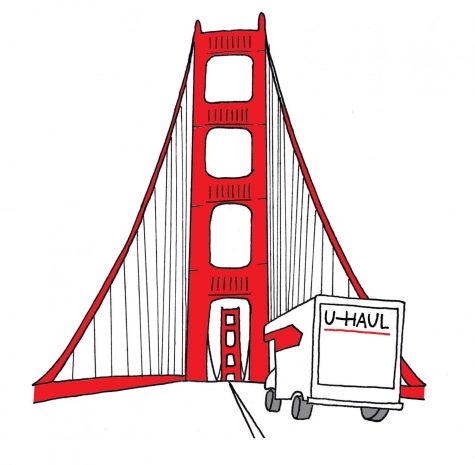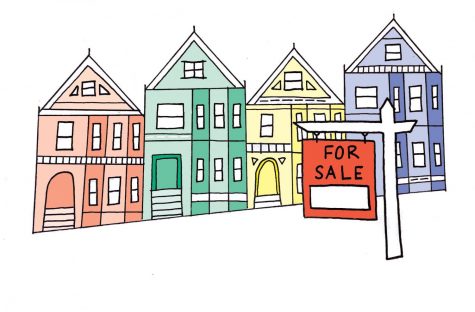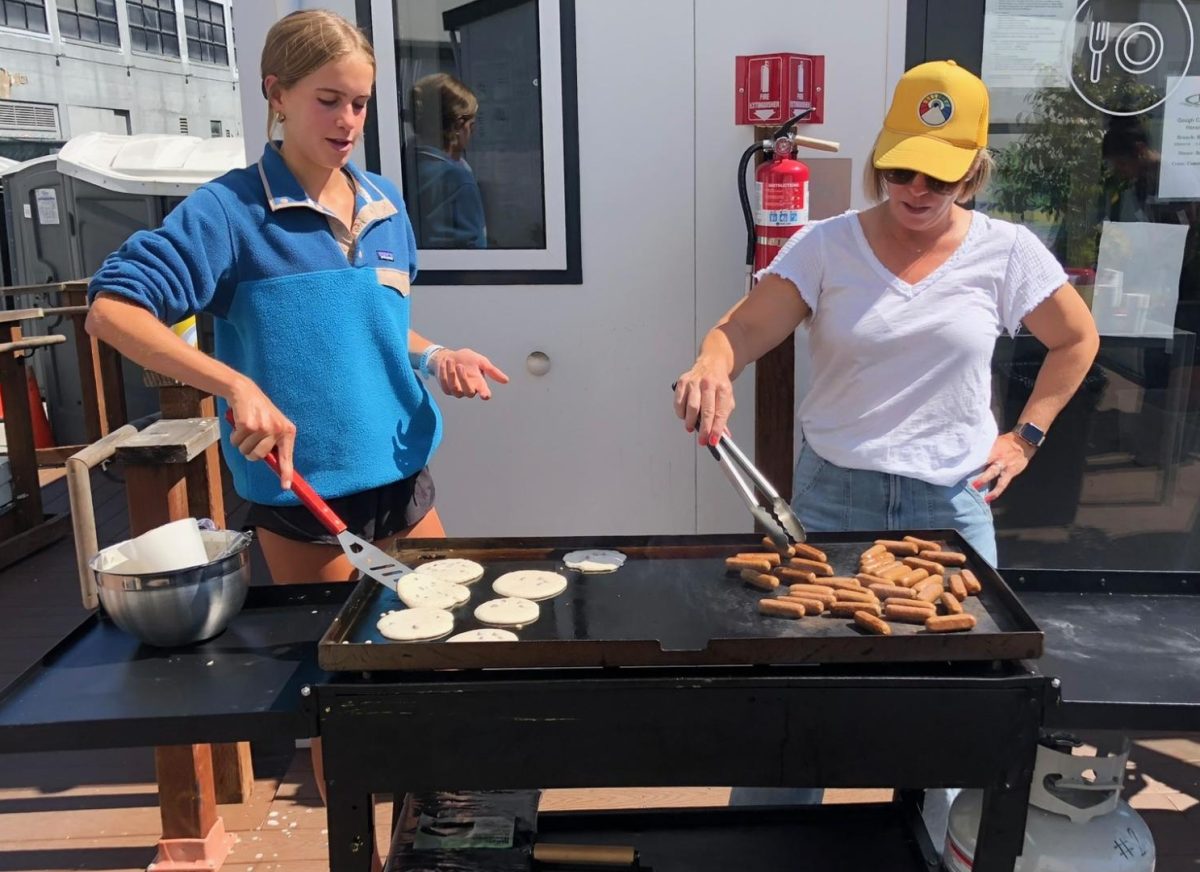Picture a family in a small apartment in San Francisco. The claustrophobic, compact rooms seem suffocating as the whole family is simultaneously Zooming and shouting over each other. Focusing on work is nearly impossible with everyone stacked on top of one another confined within the same four walls day in and day out. Space is so precious and for many, so painfully unaffordable. As COVID-19 restrictions tighten across the city, the exodus of families from San Francisco to Marin exponentially increases.
According to the California Department of Finance, San Francisco’s population has consistently been increasing for the past four decades, rising from 675,800 people in 1979 to 881,549 in 2019. However, according to a report released by the online real estate company Zillow, from May to July of this year, the number of San Francisco houses on the market has risen a substantial 96 percent compared to the same time last year.

Holly Welch, a Redwood mother and realtor working in Marin and Petaluma, attributes a large part of the exodus from San Francisco to people craving more space to enjoy themselves.
“Marin is an easy transition,” Welch said. “It’s not far, you get more space, you can get a backyard and better weather. [Since COVID-19 began] there was a large uptick in the demand for pools because people couldn’t leave and go to resorts or to community pools. Instead, people just want to have everything they enjoy within their house.”
English teacher Danielle Kestenbaum, her husband and their two young children had been happy in San Francisco for the past 10 years. They had made their small one-bedroom apartment into a makeshift two-bedroom apartment by converting the dining room into a bedroom for their children. The family was determined to raise their children in San Francisco and commute into Marin for work.
Prior to the pandemic, they were planning on moving into her friend’s larger apartment, who was going to move to the east coast. However, two weeks into the pandemic, Kestenbaum read an online article regarding the extent of potential lockdowns from COVID-19 and was soon after informed that her friends were no longer moving to the east coast, causing her to immediately want to leave the city.
“The beauty of living in San Francisco is you’re never home, so living in a small space doesn’t really matter that much. But then the beauty of San Francisco was taken away really quickly [once the pandemic hit],” Kestenbaum said.
Belena Stanford, mother to a 20-year-old, an 18-year-old and a seven-year-old whose eldest attended Marin Academy before transferring to boarding school, was in a similar situation to Kestenbaum. Stanford moved to Paradise Cay in Tiburon after beginning to feel less at home in San Francisco as the pandemic continued to spread.
“Our favorite family restaurant where we celebrate all our birthdays … and where we ate the night before all three of my kids were born is just gone forever,” Stanford said. “I think of the things I really loved, and I just don’t know what’s going to survive this. It’s after all that little chipping away at your heart that you throw in the towel.”
Another reason Stanford wanted to leave San Francisco was the pain of running minor errands, and she now appreciates the ease of daily chores in Marin.
“Something as simple as take-out pizza can end up taking 90 minutes because you look for parking for 35 minutes. Then when you get home your pizza is cold and everyone’s hungry, and you just start to think daily life just shouldn’t be this hard,” Stanford said. “[Now in Marin] I can just pull up, there’ll be a parking spot and I can just walk in. I just have so much more time to myself [instead of] being beholden to the hecticness of the city.”
A San Francisco Chronicle article reported that the average rent in San Francisco had dropped a severe 20 percent from September 2019 to September 2020 as landlords attempted to attract residents. According to Kestenbaum, her sister, who moved within the city, was offered extremely luxurious perks and incentives such as months of free rent, gift cards and a year-long subscription to a laundry service. Despite landlords’ best efforts, people continue to leave the city in large numbers.

To Stanford, who would occasionally tour houses in Marin in years past, the move seemed like more fantasy than reality until the pandemic happened.
“Once COVID-19 started, there were no more open houses. You had to sign a document that was quite extensive — basically a COVID-19 release form. Only one, sometimes two people were allowed in the house, so there was no more ‘Let’s drive around and look at houses,’” Stanford said. “You had to be very, very specific because each house that was for sale could only be shown to five or so people each day. Only people who are very serious about specific houses are able to get those precious slots to come see them.”
However, the COVID-19 precautions have not deterred potential buyers, as Welch has witnessed a large spike in demand for Marin houses.
“Marin, in general, has been a seller’s market for the last five-ish years, and that means there’s low inventory and there are more buyers than there are homes. [Home sellers] get multiple offers and sell [their home] pretty quickly,” Welch said. “Ever since about July of this year, there’s been a huge uptick in the number of houses sold in the days of the market. Now, we’ve seen 11, 12 or even 13 offers on houses.”
Even though there is much anticipation that a vaccine for COVID-19 will be released and distributed as early as the beginning of next year, the exodus is likely to continue into the future. Zillow predicts that in 2021, home values in San Francisco will drop 2.3 percent, which has not occurred since the 2008 housing crisis. Stanford hopes that this pandemic will be a wake-up call.
“Entire businesses are gone,” Stanford said. “I think it’s because the rents are just so high and hopefully it will cause a positive change in San Francisco, and people are realizing they can’t charge this much money to a small business to exist because [the businesses] just won’t make it in the hard times.”













